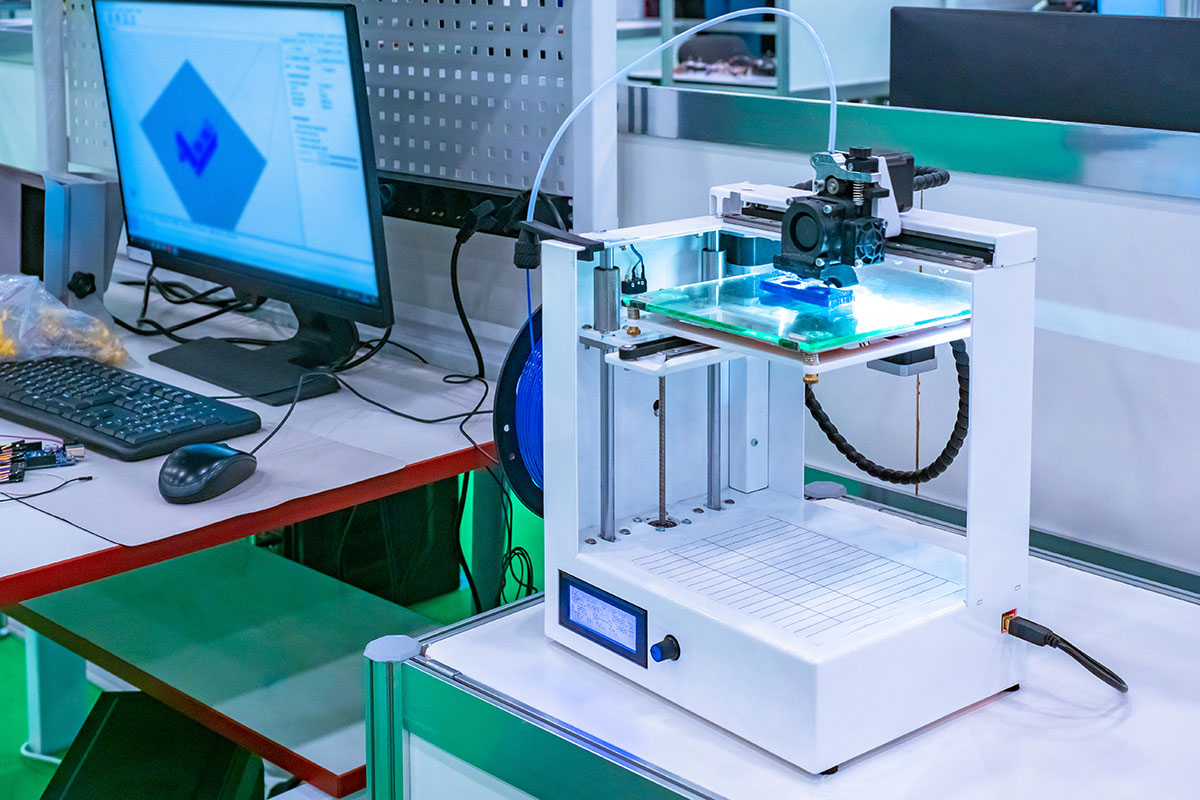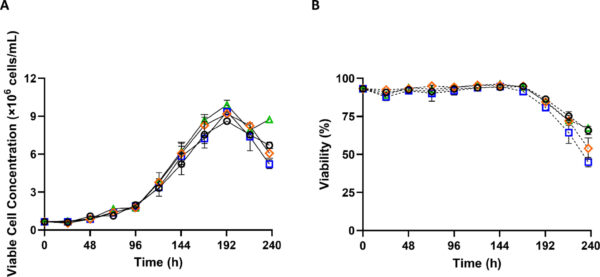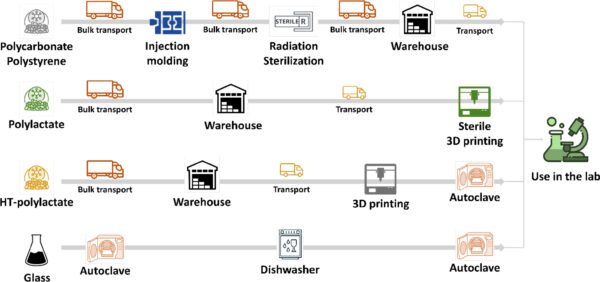Cutting Emissions Using PLA in 3D Printing

On-site 3D printing of single-use consumables can help life science laboratories reduce carbon emissions.
Life science research requires sterile, single-use plastics for items such as gloves, pipettes, and shake flasks. This industry accounts for over five million tons of global plastic usage annually. This creates issues for achieving a sustainable, circular economy for plastics. One study suggests that sterile, on-site printing of polylactic acid (PLA) could be a solution to this problem. This can drastically reduce CO2 emissions. This promising solution is cost-effective and has negligible implementation costs for life science research institutions.
You can also read: 3D Printing with Recycled Materials
PLA is well-suited for this application because it:
- Is produced from renewable resources.
- Has degradation products that are non-cytotoxic.
- Has been shown to withstand normal laboratory conditions.
3D Printed Shake Flasks
To investigate the applicability of 3D-printed PLA for life sciences laboratories, researchers first decontaminated the 3D printer. Once decontaminated, researchers printed ten simple shake flasks in two batches, which took a total of six hours. Then, researchers incubated the shake flasks with CHO cell culture media to assess them for signs of growth.

Cell growth (A) and viability (B) of four materials, with PLA-HP shown in blue squares, for Sf9 insect cells. Courtesy of The future of single-use plastics in life science: Sterile printing of PLA reduces greenhouse gas emissions by 80% and enables carbon neutrality.
Researchers also evaluated whether collagen and gelatin coatings would increase cell adhesion and growth. The study found that coating these printed parts worked exceptionally well.
Cutting Down Emissions with PLA
When considering the environmental impact of 3D-printed plastics, how it gets to the end user is vital. During distribution, packing density impacts the volume of material that trucks can transport. Transporting PLA printing filament, rather than using single-use shake flasks, can increase this packing density.

Streamlining distribution of lab consumables can reduce the laboratory’s carbon footprint. Courtesy of The future of single-use plastics in life science: Sterile printing of PLA reduces
A Sustainable Transition for Labs
This study demonstrates the feasibility of using single-use plastics 3D printed on-site for life sciences laboratory settings. Implementing this method has low costs for laboratories and can result in significant reductions in carbon emissions. As life science institutions seek to become more sustainable, 3D-printed PLA presents a viable solution.
